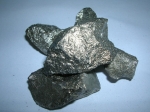Last week we dealt with collecting insects, which were simple to collect in light of this week’s potential collection: the chemical elements.
Sure, there are hundreds of thousands of insects, so you’d need a big house and a lot of patience to build your collection, but at least you can see everything you’re collecting. Insects aren’t invisible like gases, won’t explode violently if you get them near water or air (the alkali metals), and don’t radio-fry you if you get too close to them.
Finding, classifying, and collecting elements has been a popular pasttime of mankind for millennia. Like Maggie the Kollecta Magpie, Homo sapiens has always had an eye for shiny things including gold and silver. As a Roman, relaxing while deciding where next to invade, your legionnaires could be putting a grand shine on your beaten copper breastplate or their tin kettle. Back in those days, a collection of elements was pretty simple. It was basically metals – the aforementioned, plus iron, lead and the strangest and most deadly of them all, liquid mercury. 
In the 13th century, arsenic was unearthed and in the 17th some poor soul, no doubt working by candlelight into the wee small hours, discovered phosphorus. He was no match for Martin Klaproth, however, who pulled off a hat-trick of elements around 1789 – zirconium, strontium, and uranium, the latter named after the recently-found furtherest planet in the Solar System – Uranus. This feat of three in a row was next repeated in 1898 by Sir William Ramsay who raised the bar somewhat – his elements were all invisible gases! And no Emperor’s clothes here, thank you very much. These were very real. One of his discoveries was most illuminating, one useful in flashing, and the third was the base of the only known substance that could down the Man of Steel (answers at the bottom of this post).
In between all of that one-up-manship (“Mine’s a liquid, how’s that!”, “Mine has double the atomic mass of yours!”, “Mine glows in the dark!” – The Curies), various suckers for punishment tried to catalogue and order the increasing collection of elements, many killing themselves through igniting, watering, heating and tasting. Nothing like a little Rubidium Roulette to make chemistry a little less boron (ouch).
Lavoisier had the first stab in 1789, but his market strategy was poor and like Beta video tape, never really saw the light of day. A chap named Alexandre-Emile Béguyer de Chancourtois proposed an impressive sounding ‘telluric helix’, and while that alone would sound great in any sci-fi flick (c.f.’flux capacitor’), his name was simply too much of a mouthful to say. Like the promised-so-much laser disc, the theory was doomed from the start. 
A man called Mendeleev piped up, suggesting that similar elements should be grouped together because they responded to similar things in similar ways. And, based on his back-of-the-napkin scrawlings, there were gaps between known elements… and he hypothesised that these were elements that were yet to be discovered. Give that man a Nobel (gas). The Periodic Table was born.
The world of science erupted when the Periodic Table Show came to town. T’was a cheeky cabaret featuring 60 scantily clad ladies of dubious repute (one for each element shown in the Table). Them harlots did all form pairs and octets as they twirled around the tables like valence shells, teasing and cajoling those loose, free electrons in a most inappropriate manner! Oh, what a night! Seriously, Mendeleev’s idea was great – it was here, it was now, it was happening, it made sense. And the right people pushed it in the right places. Like VHS, kind of. Since then, the collection of elements has grown rapidly – to around 160, give or take a half-life. They’re very popular too, don’t you know. To this day, most households would contain around a third of all known elements, if you know where to look.
Neon, tungsten, lead, nickel in your lights. Americanium in those smoke detectors, copper in your pipes, calcium in your milk. Mercury in Grandma’s old thermometer, polonium in the spark plugs of Grandad’s old truck. Don’t even start me on cigarettes. Titanium and other metals are fashionable in jewellery and bicycle spokes, and lithium features in rechargeable batteries, anti-depressants, and as a classic track on Nirvana’s ‘Nevermind’.
So there you are, a most popular collection. 
Every home should have one.
[ www.kollecta.com/Collector/Barney ]
(answers: neon, xenon, krypton)

